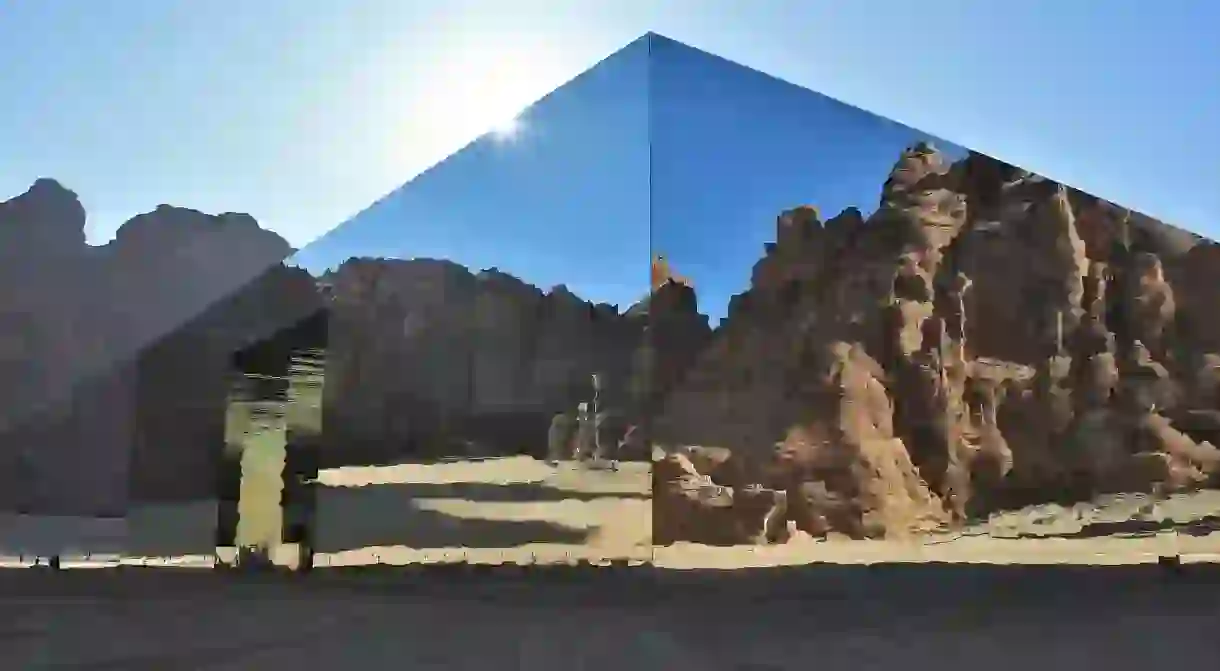Reflections on an Incredible Mirrored Building in the Saudi Arabian Desert

A surreal structure in northwestern Saudi Arabia has been wowing visitors ever since it claimed the title of the world’s largest mirrored building. Culture Trip goes beyond the looking glass to reflect on this engineering marvel in the desert, and explores an exciting regeneration project in Saudi Arabia.
AlUla (known in Arabic as ٱلْعُلَا, al-ʿulā) is a recently established governorate in the Medina region of the Kingdom of Saudi Arabia. The area has a relatively unknown name, and remains largely unexplored by modern visitors, but AlUla is home to ancient dwellings, historic monuments and incredible natural wonders.
In 2017 a Royal Commission for AlUla was established to maintain the historic sites in the area, as well as to develop a new vision aimed at tourists, as part of the a bigger plan for Saudi Arabia. The 2030 project aims to turn the country into one of the best destinations to visit by the end of the decade, and one of the first projects to be completed as part of the regeneration, Maraya, has already become a huge success.
Maraya, which, unsurprisingly, comes from the Arabic word for mirrors, is a huge multipurpose concert hall. The building is made from 9740sqm (10,4841sqft) of mirrored glass and sits in an isolated location that makes the most of the surrounding environment. Part of the design, which was realised by Milanese firm Gio Forma, is deliberately constructed in a way that hides its facade and makes the building blend with the landscape around it.

Standing at 26m (85ft) high, the venue also has a huge retractable window that opens out, in order to incorporate the desert environment into the entertainment experience. As a testament to the incredible effect Maraya has on visitors, the building recently picked up the popular choice award in the Architecture + Glass category on the prestigious Architizer.com website. The building has also been used for film projects, and in commercials for brands such as Rolls-Royce and Cartier.
This landscape has inspired ambitious architects for thousands of years. Ancient Nabataean civilisations once ran an incense route through the region and have left stunning ruins carved into nearby stone and rock. These are similar to the better-known landmarks of Petra in Jordan, although very few visitors from outside Saudi Arabia have seen them in person.

International tourism is a big part of the plans for AlUla in the future. A number of hotels and resorts are being built in the area, with environmental sustainability being a prerequisite of all the designs. Local people are set to serve as guides to the area, again ensuring a holistic approach to putting AlUla on the tourist map.
As for Maraya itself, the venue has already hosted concerts by musicians from around the world, including the Winter at Tantora festival, at which concerts and other activities are held at Maraya over several weekends. Although plans for 2020 have been put on hold, like so many others this year, the area is planning to open to tourists by the end of the year.

You can get to Maraya in the historic Ashar Valley by car. Prince Abdul Majeed Bin Abdulaziz Domestic Airport (ULH) is 35km (22mi) from AlUla, and has regular flights from Riyadh, Jeddah and Dammam.













